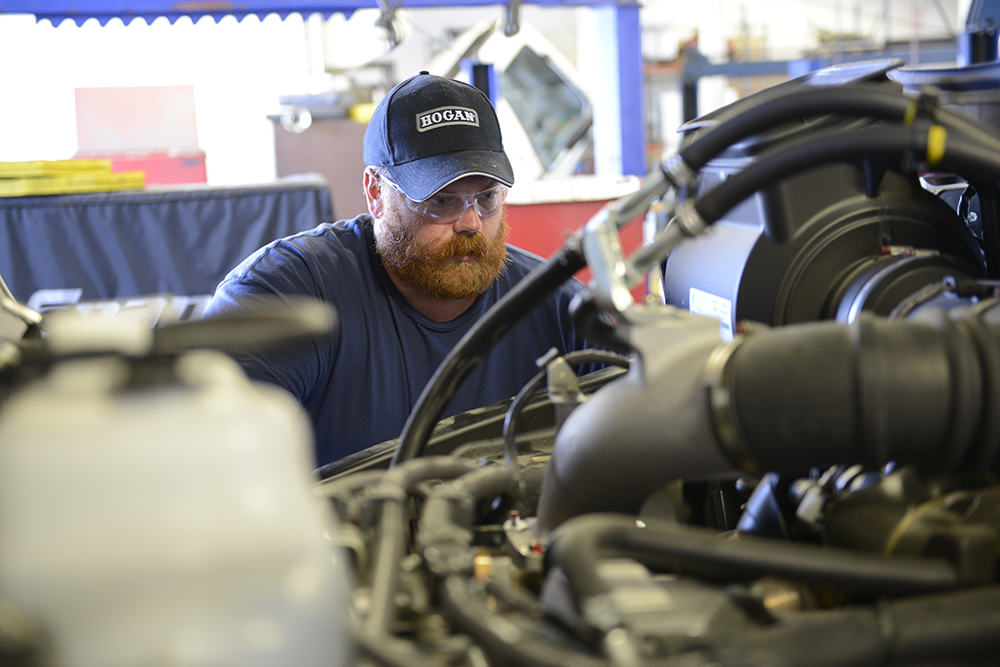This is the fourth blog in a series expanding on the issues fleets are facing covered in the January blog by Dean Vicha, President of NationaLease.
Worker shortages remain an ongoing challenge for practically all businesses globally. As Dean noted in his blog, “Getting good people with the right skillsets is increasingly difficult.” He further states that some businesses can move people around to fill the gaps; however, for our industry, people can’t just move into a job as a driver or diesel technician if they have neither the skillsets nor the CDL certification.
We live in a time where job openings are outpacing candidates by a significant amount. There is still a labor shortage three years after the COVID-19 pandemic started and threw the entire world global economy into a deep dive. According to Federal Reserve Chairman Jerome Powell, “about 3.5 million workers are ‘missing’ from the workforce.” Since many people either lost jobs or were furloughed during the pandemic, you might question why there is a shortage rather than people flocking back to work:
The Great Resignation
The U.S. Chamber of Commerce reported just this past February, that in 2021, “more than 47 million workers quit their jobs,” in what is referred to as The Great Resignation. A survey from the Pew Research Center points out that in many cases, the reasons are quite easy to understand (and hopefully easy to correct). The survey found that significant percentages of workers who quit a job in 2021 say the reasons given were:
- Low pay (63%)
- No opportunities for advancement (63%)
- Feeling disrespected at work (57%)
- Child-care responsibilities (48%)
- Lack of flexibility in hours (45%)
- Not having good benefit including health insurance and paid time off (43%)
Another major factor in The Great Resignation was the move to remote work, giving people a different understanding of work/life balance. Forbes, when exploring the future of remote work suggests that more than thirty-six million people will be working remotely by 2025.
The threatening issue of ‘quiet quitting’
As if employers don’t have enough problems when it comes to recruiting and retaining, the dissatisfactions expressed by people that resulted in The Great Resignation has now evolved into ‘quiet quitting,’ a situation where people remain on the job, but do the bare minimum to retain their position. A recent Newsweek article noted in a recent survey, 36 percent of workers responded that they are quiet quitting (doing the absolute bare minimum). These workers are physically present but not necessarily mentally available. To be fair, every business has always had to deal with workers who never go above and beyond when it comes to their jobs…who do just what the job description entails and not one step more. But when the percent of those people in your employ with this type of attitude grows, your business will do the opposite; productivity will suffer and growth will be impeded.
How fleets can attract and keep talent
In the trucking industry, we have, for a very long time, faced worrying shortages of drivers and technicians and this continues to be true. But in this new environment, transportation entities are losing workers throughout the organization from the back office to finance to logistics to HR and more. Besides hiring the best talent, businesses need to remember that there is immense value in retaining your best workers as a way to keep your business steady. Knowing why people are leaving or are unhappy (but not leaving … yet), should help companies find ways to nurture their existing workforce and create a sense of loyalty that will keep them loyal. Below are just some of the issues I’ve addressed that can offer guidance on dealing with openings within your organization. Over the past few years, I’ve addressed these issues in my IdeaXchange and NationaLease blogs:
- Professional Development – Some companies are so focused on attracting and retaining millennials and Gen Z, that they forget that their older, and likely most loyal, workers want the same opportunity to move forward and upward as do their younger colleagues.
- Reassessing Hiring Procedures and Protocols – Something as simple as simplifying the application process can help increase candidate interest.
- Recruiting technicians – Some fleets are thinking outside the box and creating their own apprenticeship programs for diesel technicians.
- Building Driver Loyalty – It’s not just a salary these days. Drivers want satisfaction that goes beyond a paycheck.
- Adapting to a Hybrid Workforce – Your drivers and techs can’t do their jobs from home, but other employees can – and want to. Technology is making this possible and productive.
When it comes to the professional development I listed above, fleets should offer ongoing training especially to drivers and technicians so they can keep up with new diagnostic equipment and tools. Since trucks continue to become ever more complex and rely more and more on advanced technology, your diesel techs need to be on top of all these changes. You need to do the same for your drivers who are often the first to spot where issues may occur.
What is clear is that fleets are going to continue to face challenges for the foreseeable future. Those who are ready to think outside the box or simply find ways to respond to employee concerns and desires will find themselves in a much better position.




